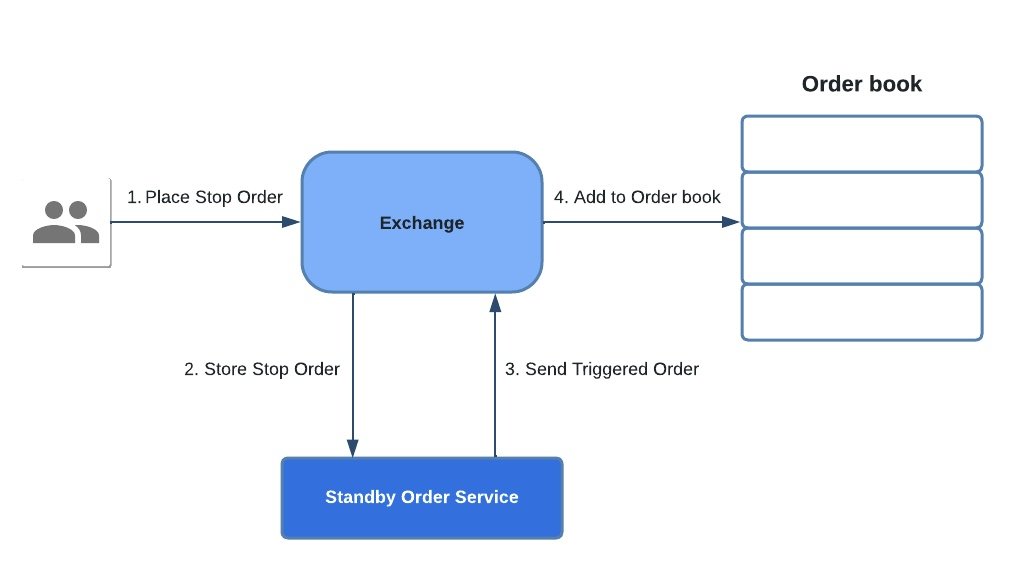What is a stop order?
Stop orders allow traders to trigger order placement at a specific stop price. The key to understanding stop orders is that they are always executed in the direction the price is moving. Since the stop price tends to "cross the market", stop orders do not go into the orderbook at creation, but only after the index price reaches the stop price.
For example, stop-loss orders can be placed to protect the position from accumulating losses beyond the pre-specified stop price (stop-loss price is necessarily lower than current market price for longs, higher for shorts). That’s why, stop orders don’t go into the order book at creation, but only after the index price reaches the stop price. Take-Profit and Stop-Loss are stop orders, placed specifically against an position.
There are a two most popular flavors of stop orders
- Stop-Market: requires only a stop price and size to be specified. After index price crosses the stop price, a market order is placed.
- Stop-Limit: requires two prices, a Stop price and a Limit price, and size. After index price crosses the stop price, a limit order with the limit price is placed.
Example Usecases:
Example 1:
A trader holds 1 BTC and wants to limit potential losses if the price of Bitcoin drops. The current market price is $55,000. The trader sets a stop market order with a stop price of $50,000.
- Trigger Condition: If the market price of Bitcoin drops to or below $50,000.
- Order Execution: The stop market order becomes a market order and is executed at the best available market price once the stop price is reached.
- Quantity: The trader is willing to sell 1 BTC.
If the market price reaches or goes below $50,000, the stop market order is triggered, and the trader's 1 BTC is sold at the best available market price at that time.
Example 2:
A trader holds 2 ETH and wants to sell if the price starts falling, but only at a specified price range. The current market price of Ethereum is $3,200. The trader sets a stop-limit order with a stop price of $3,000 and a limit price of $2,950.
- Trigger Condition: If the market price of Ethereum drops to or below $3,000.
- Order Execution: Once the stop price is reached, the order becomes a limit order with a specified limit price of $2,950.
- Quantity: The trader is willing to sell 2 ETH.
- Limit Price: The minimum price at which the trader is willing to sell each ETH.
Here's how the order would work:
- If the market price of Ethereum drops to $3,000 or below, the stop-limit order is triggered.
- The order then becomes a limit order with a limit price of $2,950.
- The limit order will be placed in the order book, and it will only be executed at the specified limit price or better. In this case, the trader is willing to sell at $2,950 or higher.
- If the market reaches the limit price, the order is executed. If not, it remains open until canceled.
Who should use stop order?
Stop orders enable traders to place orders with specific stop prices that execute depending on how the market is moving. Stop orders help catch price breakouts, obtain a predetermined entry or exit price, so it's suitable for users who want to limit their loss, or lock in their profit.
Stop Order Flow:


